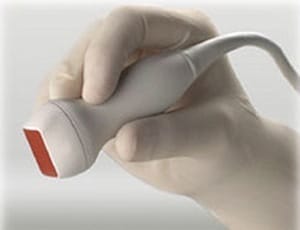Educating novice trainees in ultrasound-guided venipuncture

“Peripheral intravenous access using ultrasound requires specific training, especially for new ultrasound users” Raft et al (2021).
Complications and challenges of home hemodialysis

“Despite advances in technological aspects of HHD, potential complications still pose a challenge to health care givers” Gupta and Zimmerman (2021).
How to retrieve a central venous catheter fragment

“A catheter fragment with inaccessible ends can be retrieved using the well-known two-step method: making a free end with a pigtail catheter and seizing it with a snare catheter” More et al (2021).
Effect of splint on the dwell time of peripheral IV cannula in neonates

“To determine the effect of splint on the dwell time of peripheral intravenous cannula in neonates” Serane et al (2021).
Incidence of asymptomatic thrombosis related to PICC in adults – Full Text

“A higher Eastern Cooperative Oncology Group score (ECOG), slower blood flow velocity and left basilic vein were independent risk factors of asymptomatic thrombosis” Chen et al (2021).
Novel device prevents intravenous bolus overdose

“In this cross-sectional study, we evaluated user experience and perception of Syringe Brake, a dosage flow restrictor device” Ng et al (2021).
Minimal guidewire length for central venous catheterization of the right subclavian vein

“The aim of this study was to determine the minimal guidewire length required to maintain correct guidewire tip position in the lower superior vena cava throughout an ultrasound-guided CVC placement in the right subclavian vein” Adrian et al (2021).
Instructional videos to reduce central venous catheter complications in children

“Children with IF receiving home PN are at high risk for CVC-related complications, and caregivers are the first line of defense for catheter care” Pierik et al (2021).
Effect of peripheral IV catheter care bundle on infusion phlebitis rates

“The current study showed that the implementation of a standardized PVC care bundle can significantly enhance the assessment and identification process of phlebitis and can aid in reducing the incidence of phlebitis” Gunasundram et al (2021).
What increases the incidence of extravasation during chemotherapy – Full Text

“Treatment with 5-fluorouracil combined with cisplatin increases the incidence of extravasation” Tagashira et al (2021).
Eye tracking system in simulation training of real-time ultrasound-guided venipuncture

“The eye gaze was associated with the success rate of RTUS-guided venipuncture” Tatsuru et al (2021).
Ultrasound-guided cannulation for medical students

“As ultrasound becomes a more readily available point-of-care technology, it should be considered for inclusion in the undergraduate medical curriculum” Armson et al (2021).
Dialysis cuffed catheter adhesion to the right atrium

“The adhesion of the catheter to the right atrium was observed, but no infection was detected in the bloodstream” Ogawa et al (2021).
Extending totally implantable port flushing interval during COVID-19

“The interval of Ports flushing procedures for patients without clinical symptoms can be appropriately extended during the COVID-19 epidemic” Yan et al (2021).
The IPS IV Forum announce the 3rd webinar in the IV forum series – Free Registration

“The IPS IV Forum are pleased to announce the 3rd Webinar in the IV Forum series on Tuesday 16th March from 4.30pm to 6pm” IPS IV Forum (2021).
Infrared vein visualization devices for ease of IV access in children

“Appropriate simulator mannequins should be utilised to train healthcare providers in using these vein finder devices” Vyas et al (2021).
Field Safety Notice for BD Venflon Pro Safety needle protected IV cannula – UK Alert

“BD has confirmed an increase in reports for leakage from the injection port of the BD VenflonTM Pro Safety (VPS) Needle Protected I.V. Cannula” BD (2021).
Gravity-induced implantable port catheter deviation and thrombus formation

“It was considered that breast displacement due to gravity caused the catheter deviation and that the position of the tip of the catheter deviating to immediately above the venous valve caused thrombus formation” Kajitani et al (2021).
Comparison of the dilatory effect of three strategies on peripheral veins

“The combination of electrical stimulation followed by tourniquet application resulted in the greatest increase in venous size and is therefore considered as most effective to improve peripheral intravenous cannulation success” van Loon et al (2021).
Comparison of implantable central venous port procedures – Full Text

“To compare operative results between venous puncture (P) with real-time ultrasonography vs. cut-down (CD) with preoperative ultrasonography for totally implantable central vein access device (TICVAD) implantation” Otsubo et al (2021).
Achieving superficial femoral venous access in a critically ill COVID-19 patient

“A consult to the Vascular Access Team succeeded in establishing central catheter placement with an ultrasound-guided mid-thigh superficial femoral 55-centimeter triple lumen catheter” Ostroff et al (2021).
High rates of central venous catheter replacement or revision in children

“Twenty-five percent require at least 1 RRA within 6 months, with associated morbidity and costs” Buonpane et al (2021).
Total cost of cannulation strategy for extracorporeal membrane oxygenation

“Limited data are available describing hospital costs and clinical resources required to support ECMO patients” Walker et al (2021).
Medical technologies evaluation of Curos disinfection caps

“The ability of Curos™, a disinfecting cap for needleless connectors of vascular access lines, to prevent bloodstream infections was considered by the National Institute of Health and Care Excellence (NICE) as part of the Medical Technologies Evaluation Programme (MTEP)” O’Connell et al (2021).
Adapting a vascular access service to meet the needs of the COVID-19 pandemic – Full Text

“We describe how the Vascular Access Service (VAS) at a New York City academic hospital adopted a team-based approach to efficiently meet increased demand for vascular access devices” Zhang et al (2021).
Increasing peripheral IV cannulation success using near-infrared technology

“To study the effectiveness of a near-infrared (NIR) vascular imaging device (Veinviewer) to facilitate intravenous cannulation” Gras et al (2021).
Study describes how to reduce PIVC insertion pain in pregnant women

“The current study can generate awareness in pregnant women in terms of choosing between pharmacological and nonpharmacological practices that nurses use during PIVC insertion” Höbek Akarsu et al (2021).
Position paper for the management of central venous access in children

“As more emphasis has been placed on the prevention of central line-associated bloodstream infections and new technologies have developed, care for central lines has improved” Wendel et al (2021).
ECG-electromagnetic guidance for PICC insertion

“Here, we aimed to compare ECG-EM guidance with FX guidance with regard to the final tip position of PICCs” Gullo et al (2021).
Ultrasound-guided external jugular vein puncture in sepsis – Full Text

“In the present study, we aimed to explore the effect of ultrasound-guided external jugular vein puncture and catheterization in patients with sepsis” Luo et al (2021).

